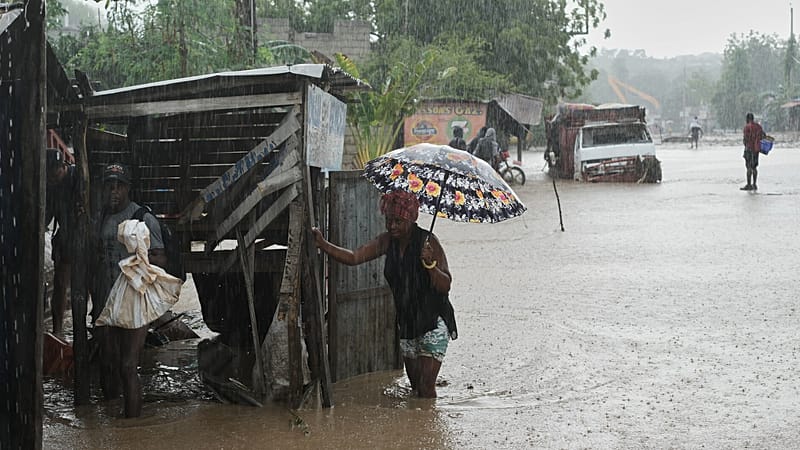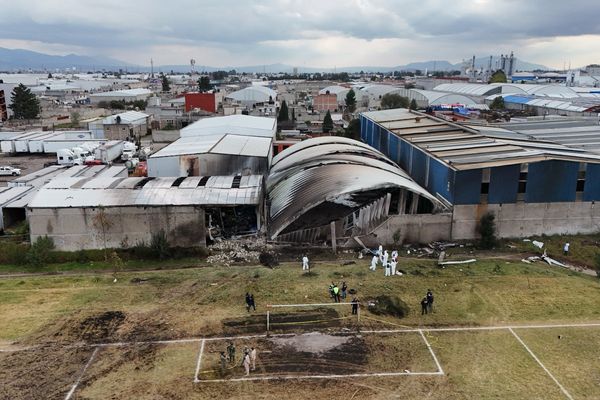
When Hurricane Melissa tore through Jamaica last week, it did so as one of the strongest Atlantic storms to make landfall on record.
Its winds reached 295 kph and it dumped more than a metre of rain in parts of Jamaica as it left a trail of destruction across the Caribbean.
A rapid analysis from London’s Imperial College shows human-driven climate change may have made the storm more likely, and more intense.
Did climate change make Melissa stronger?
Using a high-resolution storm-simulation model, scientists at Imperial College London’s Grantham Institute compared thousands of possible “Melissa-type” hurricanes under pre-industrial, present-day and future climate conditions.
Their analysis shows that a storm of Melissa’s strength striking Jamaica would have been extremely rare in a cooler, pre-industrial world, occurring roughly once every 8,100 years.
In today’s warmer climate, that probability rises to once every 1,700 years, making such an event around four times more likely.
The researchers also estimate that current climate change likely increased Melissa’s peak wind speeds by around 19 kph. In a world that is 2°C hotter – the upper limit put in place by the Paris Agreement - storms of this kind could be around 26 kph stronger than they would have been in a pre-industrial world.
“The Caribbean sea surface temperature is even higher than normal and we know that climate change has contributed to this,” Ralf Toumi, director of Imperial College’s Grantham Institute, said.
“We also know that warmer oceans will sustain stronger storms so there is a direct connection to climate change.”
How hotter oceans feed stronger storms
Tropical storms get their energy from warm oceans. According to environmental non-profit Climate Central, human activity has made them warmer than they should be.
Warmer seas mean stronger winds, heavier rainfall and bigger storm surges.
Melissa’s rapid intensification occurred over waters that were 1.2°C to 1.4°C above average for October, conditions made at least 500 to 800 times more likely by human-caused climate change, the group says.
Rising sea levels also affect coastal flooding, while hotter air and water create heavier and more intense rainfall, raising the risk of deadly inland flooding.
While the current conditions have been readily studied, other researchers have sought to put Melissa’s strength in a historical context.
On his Substack, climate scientist Ed Hawkins shared a historical reanalysis from 1903, when, a category 3 hurricane made landfall and caused significant damage to Jamaica.
He reconstructed that storm in a warmer world and simulated its rainfall during landfall, finding that “the already intense rainfall would have been even heavier”.
In other words, he found that the storm may have been more like Melissa.
“This example highlights the value of considering real events from the past and how translating them into a modern or future warmer climate can give us useful insights into how extreme weather will now cause more damage,” Hawkins writes.
Are more monster storms on the horizon?
Climate change doesn’t necessarily mean more hurricanes overall, but it is likely to make the ones that do form stronger, more destructive and more likely to undergo rapid intensification.
According to the non-profit Union of Concerned Scientists, there have only been two years since the start of the satellite era in 1960 with three or more category 5 hurricanes: the record-breaking 2005, with Emily, Katrina, Rita and Wilma, and now 2025, with Erin, Humberto and Melissa.
As the planet warms, experts warn that this could mean more monster Atlantic hurricanes like the three that have struck so far this year.
“Warm oceans are a key ingredient for strong hurricanes,” explains Dr Akshay Deoras, a researcher at the National Centre for Atmospheric Science, University of Reading.
Dr Deoras says that the part of the Atlantic where Melissa churned up into one of the most intense Atlantic hurricanes on record is “like a boiler that has been left on for too long”.
“Ocean waters are around 30°C, two to three degrees above normal, and the warmth runs deep. Climate change has warmed the oceans, giving them more energy to fuel storms like Melissa than they would have had a few decades ago.
“This means that if Melissa had occurred decades ago over cooler oceans, she would not have been able to intensify so rapidly or sustain her strength.”







